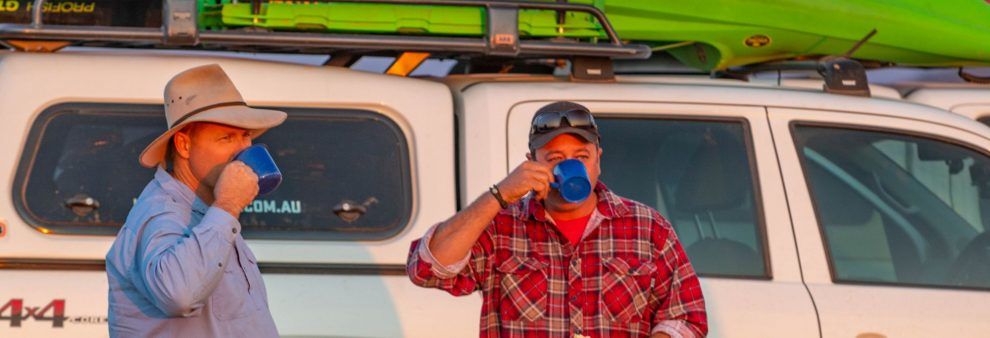Article Mr4x4
Friday the 22nd of March was the United Nation’s World Water Day. Given that our bodies consist of around 60% water, now is as good a time as ever to have a look at water storage and use on camping trips.
It is often recommended to carry two litres of water per person for each day, and a bit more for backup. In hot and dry weather, the volume is raised to five litres per person per day. For a family of four, that’s at least eight litres a day and for a long weekend you’ll need 24 litres, minimum! In the middle of summer, that’ll be 20 litres a day for the same four people.
That calls for a lot of water and weight, so being frugal with water use is important.
How can you minimise water use?
Obviously, drinking less isn’t an option. Water use around camp can be high though, with washing hands, cooking and dishwashing being three heavy users of water.
- Instead of filling up your dishwashing bowl with water, wipe the plates with paper towel first, then use a pair of spray bottles: one with dish-soapy water, the other plain water, for rinsing. One-pot meals require less washing up too!
- A spray bottle of soapy water can also be used on dirty hands, especially effective when paired with hand sanitiser.
- Cook foods that don’t require boiling in an excess of water, such as pasta or rice.
- Baby wipes. Great for stinky body parts and hands alike. Judicious use of baby wipes can stretch out the periods between showering. Swimming is also a great option to freshen up, but please don’t use soap or shampoo near rivers, creeks or dams; it spoils the water for everyone and everything else.
- If you need to do the laundry, rather than your usual laundry detergent, try using wool wash – it works with less water than most laundry detergents and doesn’t need rinsing out. If you don’t have a manual washing machine or in areas of low water, use a dry-bag. Add the clothes that are important (socks and undies have priority obviously), with a couple of litres of water, and seal the top with plenty of air inside. Drive around all day and in the afternoon the clothes will be well agitated.
- Around camp, when you use water, do so over a bucket which can then be used for rinsing hands and plates prior to washing them if the spray bottle trick isn’t up your alley. Prior to breaking camp, use this grey water to ensure your campfire is completely extinguished too.
Water Storage
There are four common ways to carry water for a 4X4 trip:
- Plastic jerry cans
- Water bladder
- Individual bottles
- Hard-mounted water tank
Each have their pros and cons. Individual bottles are the least environmentally friendly, but puncture one and you won’t lose much from your total capacity. They are time consuming to refill too. Jerry cans are heavy to handle when full and if not fitted with a tap, are a pain to use. Water bladders are relatively recent technology and have a lot of positive features, including size and adaptability to fill otherwise unused space. Hard-mounted water tanks, both load-space mounted or underbody, are possibly the best of the options but also the most expensive and often too limited in size, so may need supplementing anyway.
For previous TV show seasons, we used common plastic 20L jerry cans. It helps to usually only have two occupants per vehicle. As for season 12? Our new build is in progress, so you’ll have to wait and see!
Water collection
Clearly, carrying enough water for a week-long trip in dry weather with a full car of passengers isn’t viable. Refilling along the way is the best solution. If you’re passing a source of drinking water and have an empty vessel, probably best stop and refill while you have the chance. A potable water hose can be handy for filling tanks.
Check the inscription: ‘Drinking water hose’
The solution if there is no tap? Collecting from creeks, rivers and dams is an option. Waterborne parasites, viruses and bacteria can be a risk though. According to the USA-based CDC, if the water is clear, a rolling boil for one minute will kill anything nasty, though chemicals can still be present. If over 2000m elevation, increase to three minutes, not that there are many places that high in Australia! Other options include purifying tablets, UV wands and bulk-filtering options like the Lifesaver jerry can below.
A water-purifying jerry can, such as this one by Lifesaver, can increase your chance of water replenishment dramatically
How do you carry your water, and how much do you carry?


